Predictions & Data for this entry
| Model: std | climate: MA, MB, MC | migrate: | phylum: |
| COMPLETE = 2.8 | ecozone: MC | food: biP | class: |
| MRE = 0.209 | habitat: 0jMp, jiMb | gender: Hh | order: |
| SMSE = 0.132 | embryo: Mp | reprod: O | family: |
Zero-variate data
| Data | Observed | Predicted | (RE) | Unit | Description | Reference |
|---|---|---|---|---|---|---|
| ab | 1 | 0.9691 | (0.0309) | d | age at birth | CiriTosc2002 |
| ap | 60 | 41.49 | (0.3085) | d | age at puberty | CiriTosc2002 |
| am | 730 | 752.2 | (0.03048) | d | life span | biotic |
| Lb | 0.1 | 0.1043 | (0.04304) | cm | total length at birth | CiriTosc2002 |
| Lp | 5 | 7.077 | (0.4153) | cm | total length at puberty | CiriTosc2002 |
| Li | 15 | 16.67 | (0.1113) | cm | ultimate total length | biotic |
| Ri | 16.44 | 16.07 | (0.02229) | #/d | maximum reprod rate | guess |
Uni- and bivariate data
| Data | Figure | Independent variable | Dependent variable | (RE) | Reference |
|---|---|---|---|---|---|
| LWdb | 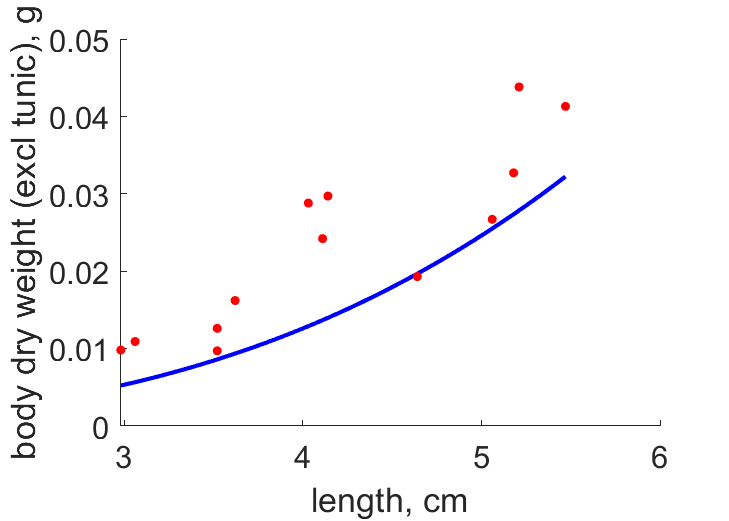 | length | body dry weight (excl tunic) | (0.3238) | PeteScho1995 |
| LWdt | 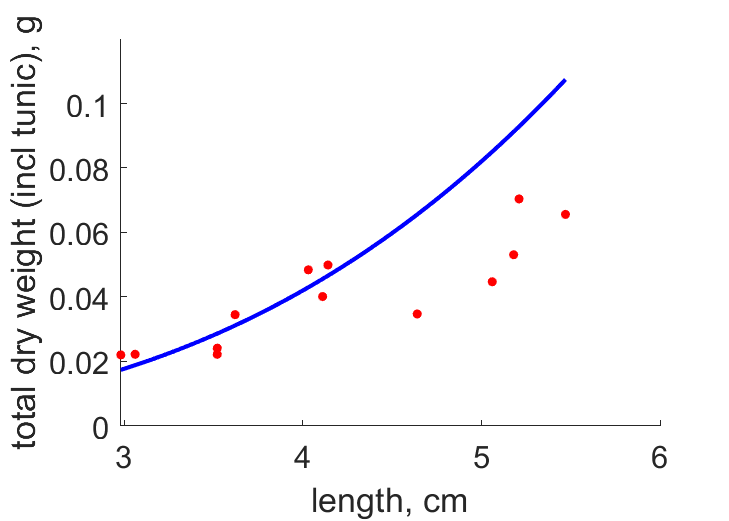 | length | total dry weight (incl tunic) | (0.3379) | PeteScho1995 |
| WdJO |  | total dry weight | respiration rate | (0.3644) | Shum1978 |
| XJC | 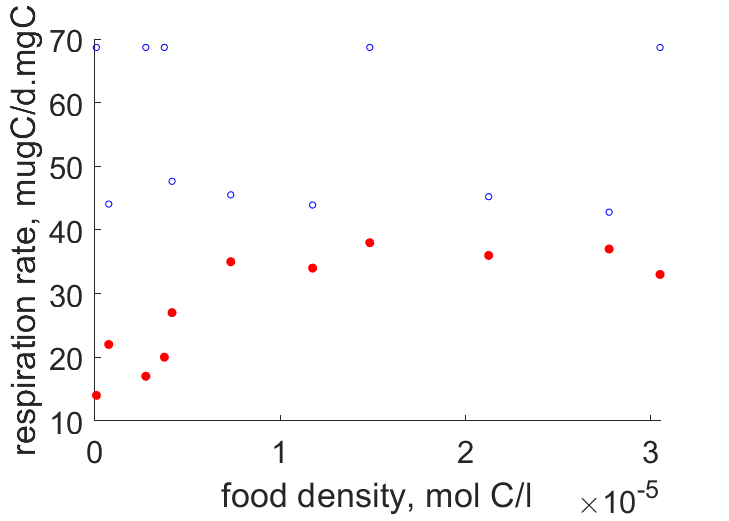 | food density | respiration rate | (0.9571) | PeteScho1995 |
| XJX |  | food density | ingestion rate | (0.722) | PeteScho1995 |
| XdL | 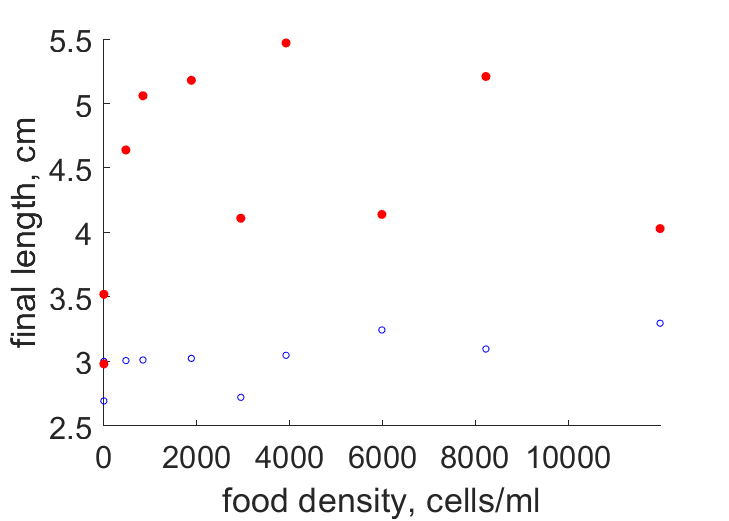 | food density | final length | (0.3204) | PeteScho1995 |
| XdWdb | 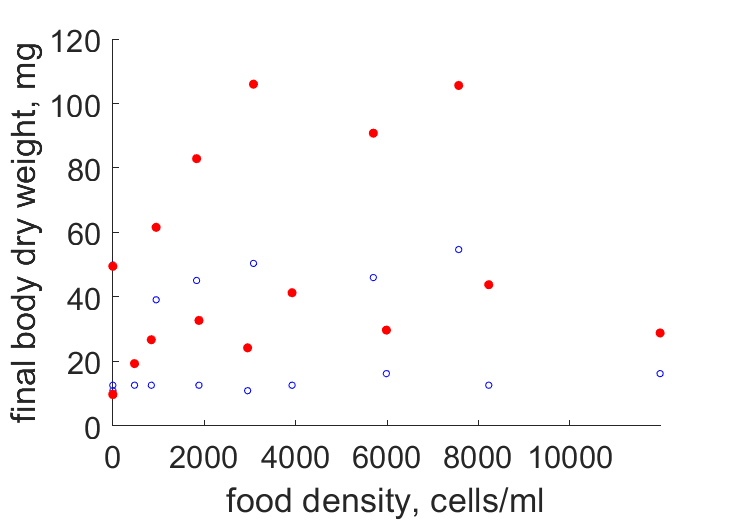 | food density | final body dry weight | (0.4672) | PeteScho1995 |
| XdWdt | 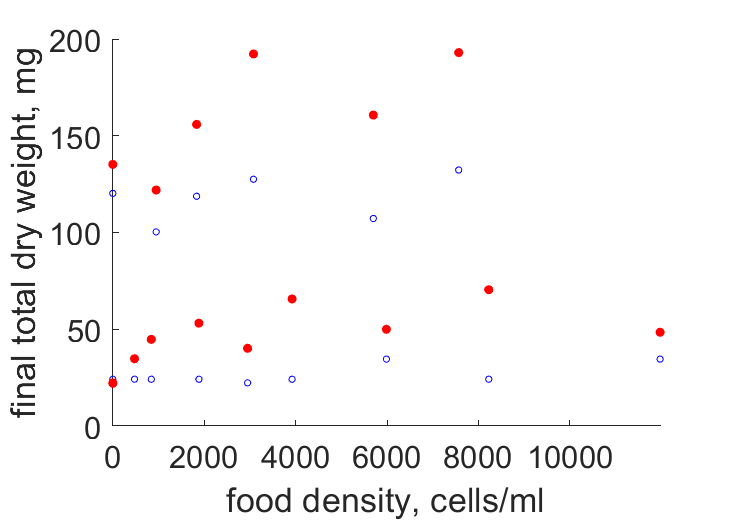 | food density | final total dry weight | (0.3192) | PeteScho1995 |
| tL | 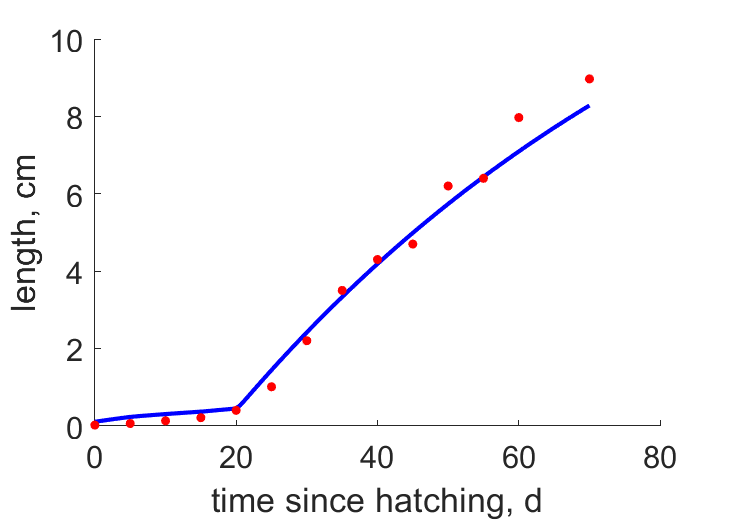 | time since hatching | length | (0.08496) | CiriTosc2002 |
Pseudo-data at Tref = 20°C
| Data | Generalised animal | Ciona intestinalis | Unit | Description |
|---|---|---|---|---|
| v | 0.02 | 0.0545 | cm/d | energy conductance |
| p_M | 18 | 113.5 | J/d.cm^3 | vol-spec som maint |
| k_J | 0.002 | 0.002 | 1/d | maturity maint rate coefficient |
| k | 0.3 | 0.02755 | - | maintenance ratio |
| kap | 0.8 | 0.9998 | - | allocation fraction to soma |
| kap_G | 0.8 | 0.8032 | - | growth efficiency |
| kap_R | 0.95 | 0.475 | - | reproduction efficiency |
Discussion
- Length till 1 cm was measured with an ocular micrometer, probably under a microscope. Larger animals were measured with a ruler, problably while remaining in the culture vessel. The growth curve suggests that putting them under a microscope affects growth.
- Assumption concerning Food: Rhodomonas: cell diameter 6 mum; 113 mum^3/cell; 42e-12 gC/cell
- Total dry weight (Wdt) includes tunic, body dry weight excluding the tunic (Wdb). The tunic is assumed to be propto structure so Wdt = L^3 d_V (wt + f * w) while Wdb = L^3 d_V (1 + f * w)
Facts
- Condition index = body dry wt (excluding tunic)/ total dry wt (inclunding tunic) (Ref: PeteScho1995)
- Larval stage does not feed, lasts minutes to hours at 20 C. (Ref: PeteScho1995)
- Hermaphroditic; external fertilisation; sperm lives for 16 h. (Ref: PeteScho1995)
Bibliography